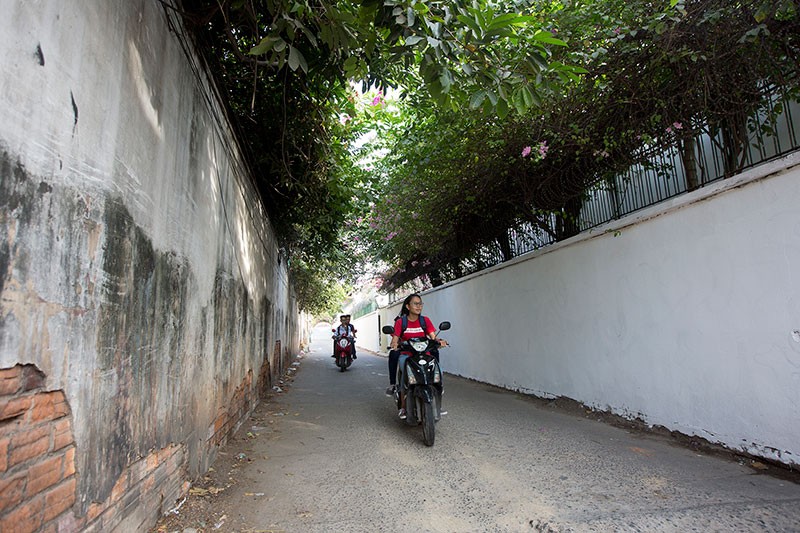As Cambodians continue to debate the government’s whitewashing of a street artist’s multistory mural this week, the information minister publicly critiqued the decision on Friday and drew a comparison to the retrograde attitudes of Soviet leaders toward modern art.
The huge turquoise-hued mural depicting a local seamstress with needle in hand was painted on the north wall of Phnom Penh’s White Building earlier this month by American artist Miles MacGregor, known by the handle “El Mac.”

In response to a Facebook post by City Hall spokesman Long Dimanche announcing that the mural would be whitewashed because it had been painted without permission, Information Minister Khieu Kanharith suggested local government officials would have done better to congratulate Mr. MacGregor on his achievement.
“If we had called him to meet and praise him, this would have been better,” Mr. Kanharith wrote.
In response, Mr. Dimanche wrote: “Yes uncle, we told him already that he might be a really good artist, but the authorities do not allow art like this, including graffiti in Phnom Penh.”
Mr. Kanharith then hit back with a proverb, implying that City Hall could have avoided the tirade of criticism it has faced since the mural was ruined.
“Scatter the firewood before the flames arrive,” the information minister wrote.
“Next time, [Mr. MacGregor] can push for international participation in beautifying Phnom Penh.”
Contacted on Friday for further comment, the information minister appeared to draw an analogy between the government’s whitewashing of street art and the negative effects Nikita Khrushchev—the leader of the Soviet Union between 1958 and 1964—had on art in his country.
“Street art (not graffiti) must have its place in Cambodia,” Mr. Kanharith wrote in a Facebook message.
“I remembered the day when Nikita Khrushchev…[visited] the art gallery and expressed his horror of modern painting. For decades Russian people knew nothing about new art because just one man disliked it,” he added.
On Friday, reports also emerged that other graffiti and street art had been painted over in Phnom Penh, including a well-known alleyway off Norodom Boulevard whose walls were covered in vibrant paintings.
Asked about this whitewashing, Mr. Dimanche declined to comment. He also declined to respond to Mr. Kanharith’s suggestion that the attitudes of City Hall were comparable to those in Soviet Russia.
Kimchean Koy, a 17-year-old street artist from Phnom Penh, said he had mixed feelings about the removal of graffiti from city walls.
“Part of me thinks if it was there before, why do it now? But at the same time, it’s part of a constant battle. With street art, it’s part of the cycle, like painting and then it being painted over, and then painting it again.”